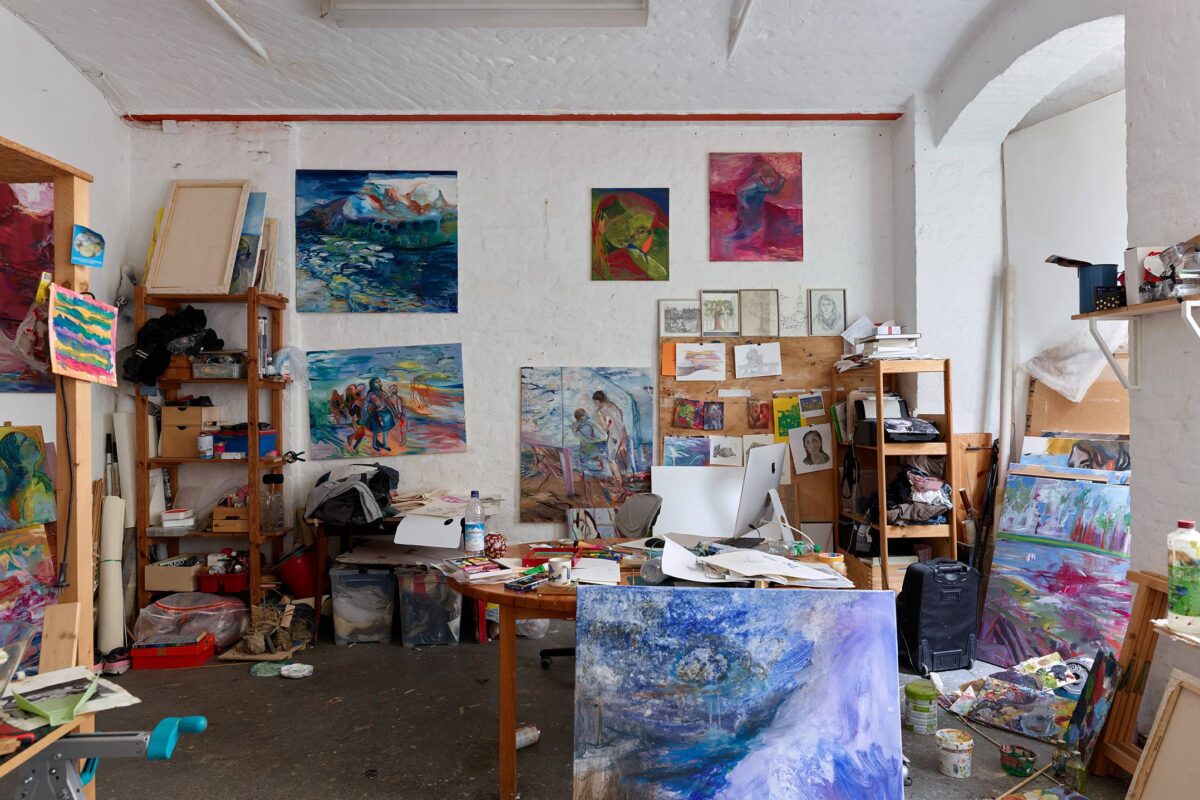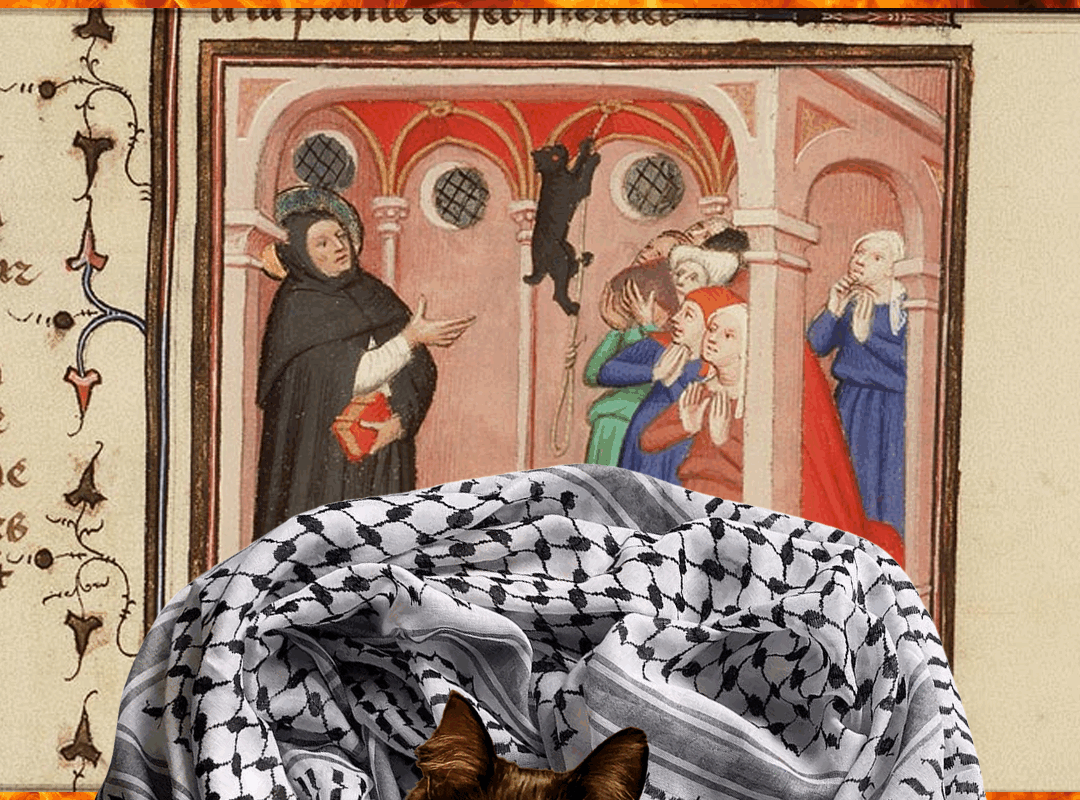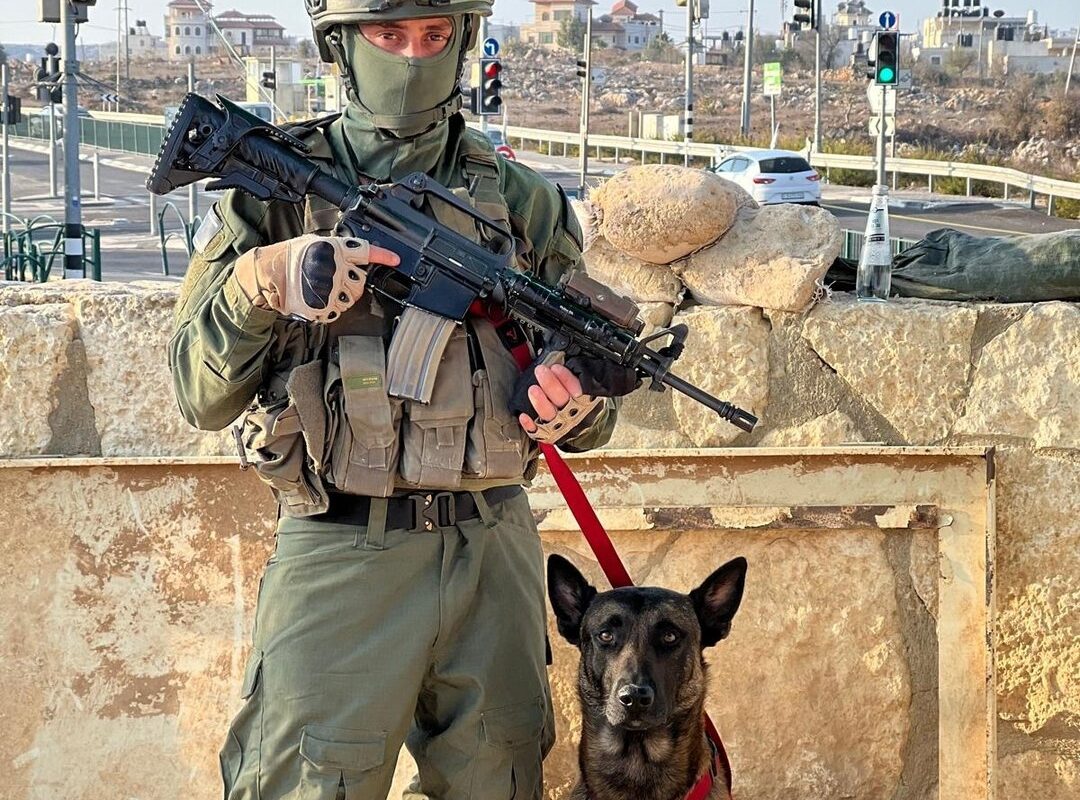Back in 2017, when Orania.Berlin, the luxury hotel at the western end of Oranienstraße, first opened its doors, it’s likely more than one lukewarm bottle of Sterni had “Berlin is over” muttered into it from across the street.
Lavished with handwoven Luribaff carpets and Japanese silk curtains, “Berlin’s coolest grand hotel” was a new kind of Kreuzberg arrival, one that didn’t just move in but repackaged the fading smell of anarchy around it as ‘boutique ambience’. Sitting on a low-slung designer couch behind a floor-to-ceiling glass façade, guests could look out onto a scuffed up Oranienplatz and feel, for a moment, like they were part of the furniture. Like they were part of the myth of a city built on art and friction. Like being there was a creative act in itself.
The promise of inclusion
But while guests behind the glass cosplayed the city’s creative identity, and that familiar three-word prophecy floated through streets being steadily smoothed out for consumption, artists arriving in Berlin were cautiously optimistic about a different kind of shift. Beyond the warnings of paperwork, waiting rooms, and Kafka-esque loops of registration (all the things Germany truly excels at), new spaces and collectives were taking shape, and the cultural scene was finally trying, or at least pretending, to catch up with the diversity already shaping the city.
In the same year, the Berlin Senate had launched Diversity Arts Culture, a project aimed at addressing structural racism and underrepresentation across the city’s cultural sector. And at Weißensee Art Academy, the *foundationClass — founded in 2016 for artists affected by racism, exile, or displacement — became one of the clearest expressions of that moment: a counterspace where creative practices could continue despite the barriers of bureaucracy and belonging.
Room to make it happen
What allowed these movements to take root wasn’t just Germany’s supposed awakening to the language of inclusion, but the material conditions that made it possible: space. Berlin’s reputation as a cultural haven rested on an older foundation of subsidised studios and public grants that kept artists secure in the city. Berufsverband Bildender Künstler (BBK), is one such association whose network of subsidised studios quietly made it possible for its tenants to keep working as the city grew less affordable.
For decades, the BBK’s studio programme has been one of Berlin’s quiet pillars of cultural life. The association rents buildings across the city and offers them to artists at affordable, income-adjusted rates. In 2021, the system was restructured into two funding tiers — 4.09 and 6.50 euros per square metre, bruttowarm (heating included) — with the BBK covering the difference between those set rates and the market price. The model allows hundreds of artists to maintain stable studios in a city where commercial rent has become unmanageable, effectively bridging the gap between public funding and private property.
Atelierhaus Fichtestr. 3
On Fichtestraße, six artists — Salwa Aleryani, Anaïs Héraud-Louisadat, Verónica Lehner, Isabell Spengler, Antje Taubert, and Ladislav Zajac — share one of these BBK studio houses. The space holds a mix of practices: installation, moving image, participatory art, and art therapy. It’s less a collection of rooms than a small ecosystem, where studio work spills into workshops, neighbourhood collaborations, and classrooms.
For Salwa Aleryani, who arrived in Berlin a decade ago, the studio represents what once drew so many artists to the city, the chance to sustain a practice without constant precarity. “On a daily basis, it gives me a framework to structure my work around” she says. “If I don’t have that studio, I would lose not just a physical space to build my work, but also the structure for preparing classes, organizing my thoughts, bringing people in. That’s not something you can really do from your kitchen table.”
Across the corridor, others describe it the same way: a working space, but also as a small community that still carries something of Kreuzberg’s collective spirit, even as the pressures of rent and redevelopment close in. “Our studio house is a diverse community of artists from different backgrounds, generations, and disciplines,” says Héraud-Louisadat, who has shared the building since 2018. “Because of the long-standing connections and shared energy, this place is unique, not anonymous like so many others. It’s what people mean when they talk about Berlin’s creative synergy.”
The cuts
Then in May, the artists at Fichtestraße received an email. As part of Berlin’s much-publicised cultural budget cuts — which stripped €130 million from the 2025 culture budget, around 12 to 13 percent — their studio was among those at risk of losing support by year’s end.
The BBK called the move “a severe threat to the atelier program, with no studio truly secure”. Without these workspaces, the entire system begins to unravel. Artists already working at the edge can’t simply relocate; the private market offers no affordable alternatives, and a studio isn’t something you can easily replace.
“I depend financially on my studio,” says Héraud-Louisadat. “Losing it would mean I might not be able to continue my profession at all. It wouldn’t just affect me, but also my family, my collaborators, and the people I teach or work with through art education and therapy.”
Verónica Lehner feels the same uncertainty. Her practice relies on large, time-intensive installations and paintings — the kind of work impossible to make in an apartment shared with family. “Without this studio,” she says, “I simply couldn’t continue.”
Artists from endangered studios across Berlin haven’t been waiting quietly. They’ve written open letters, met with local representatives, and joined demonstrations. For months, they’ve petitioned the Senate to reconsider, coordinating with the BBK to push for temporary extensions and public visibility.
According to BBK estimates, Fichtestraße is one of seven subsidised studio houses set to lose support in 2025. Thirty more are expected to follow in 2026, and another fifty-eight by 2027 — nearly a hundred buildings in total. Most are tied to leases the Senate has chosen not to renew, and once those expire, the spaces don’t come back; they’re converted, privatised, or simply folded into the commercial market.
The city is effectively cutting away the very infrastructure that drew visitors, residents, and artists alike, and the fallout is anything but equal.
Who gets left behind?
Aside from the studios at risk, when it comes to funding cuts for spaces, institutions with PR departments, long-standing ‘prestige’, or the right philanthropic ties are better equipped to weather the storm and grab all the headlines. Meanwhile, initiatives that aren’t — like *foundationClass — have already disappeared.
The Senate has scrapped Diversity Arts Culture and drastically reduced support for Berlin Mondiale, which connected underrepresented communities with the city’s cultural institutions. Oyoun, a cultural space in Neukölln committed to decolonial, queer, feminist and migrant perspectives, lost public funding after refusing to disinvite a Jewish Voice for a Just Peace in the Middle East speaker (a decision that exposed how conditional Berlin’s support for diversity really is). Sinema Transtopia, known for its intersectional programming and social discourse, also had 100% of its support pulled.
The list goes on and the pattern is impossible to ignore. The same communities once held up as proof of “Berlin’s cultural diversity” are now the first to lose support. “You start to see that those who have much bigger cuts,” Salwa points out, “it’s connected to institutions that are more grassroots, are more connected to certain communities, and have a certain kind of programming. It’s affecting people, but not equally and there’s a reason for that. It’s not coincidental.”
What’s happening isn’t just a question of budgets or priorities, but of power and of who gets to define culture in the first place. Funding cuts are being used not just to save money, but to silence institutions that challenge Germany’s self-image, whether through decolonial, queer, or pro-Palestinian perspectives. And while artists and cultural workers fight to hold onto their voices, the state is quietly investing in more police, more surveillance, and more rules about who can gather and what can be said.
Policing the void
In 2023, just around the corner from Orania.Berlin, on the edge of Kottbusser Tor — a neighbourhood with a largely migrant community — a new police station opened its doors. Officially framed as a response to “safety concerns” in the area, the move marked a shift in tone, with politicians speaking of danger zones and disorder. Fast forward to today and knife-crime posters line Görlitzer Park and Kotti, casting a sense of threat over public space. The message is clear: be afraid.
Because while artists lose studios and community spaces disappear under the guise of austerity, Berlin’s police budget has magically climbed to €2.9 billion. The city that once prided itself on artistic freedom now dismantles cultural infrastructure with one hand while expanding its machinery of surveillance and control with the other.
And the fearmongering doesn’t stop at knife posters. Over the past two years, Berlin has become a testing ground for the criminalisation of protest — just look at every Palestine demo. They’re often banned pre-emptively, and people are prosecuted for flags, slogans, or even gestures. When demonstrations do go ahead, it’s always the police who escalate violence first, using disproportionate force and provoking confrontation before pointing to the resulting chaos as justification.
At the same time, there must have been hundreds of thousands of euros poured into court cases against pro-Palestine activists caught in that chaos. The cases are so weak they’re routinely thrown out, yet they still drain public funds and attention.
The cycle is self-perpetuating: police violence produces unrest, the media report the police are the victims of disorder (yes, really), and authorities cite that disorder to spend more on the very system causing it. Meanwhile, those protesting genocide are criminalised and art reflecting an increasingly authoritarian reality quietly disappears ‘from the walls’.
Resistance, solidarity, and the future
Even as “austerity” tightens its grip, cultural workers across Berlin are refusing to accept silence as the new normal. On July 8th, dozens of social and youth organisations shut their doors in protest. ‘Tag der geschlossenen Tür’ was a citywide action warning that the coming cuts wouldn’t just mute culture, but dismantle youth development, cultural education, inclusion, and anti-discrimination work.
As well as the march, a petition to preserve the BBK’s subsidised studios continues to gain support (sign it here), while collectives organise open letters and open studios. “I think resistance looks like collectivity,” Salwa says. “Trying to come together and mobilise, have more presence in the public to show how this affects not just us on a personal level, but entire communities, and the wider city too.”
Artists are using what platforms they have to make visible what’s being quietly erased and to remind those in power that what’s disappearing isn’t abstract. Some are listening. “There are a couple of political representatives who are really supportive,” she adds. “They’re sharing information, trying to mobilise, mostly from the opposition. At least when it comes to these kinds of cuts, they’re really trying to push back for now.”
And sometimes, persistence pays off, if only temporarily. After months of uncertainty, the artists at Fichtestraße received new contracts with a one-year extension. On paper, the building’s lease runs until 2027, though the Senate says funding may only last until 2026. It’s a reprieve, not a resolution, but for now it buys a bit more time.
So what’s left to lose?
Back in 2017, when people muttered “Berlin is over” into lukewarm bottles of Sterni, it was mostly a cliché — shorthand for tourists, tech money, or another wave of gentrification. None of it seemed good, but now that prophecy sounds different. What’s fading isn’t only affordable studios or community spaces, but also the fragile progress made toward inclusion and access, not just in the arts but across Berlin’s broader cultural, ethnic, and public life.
The cuts follow a familiar pattern; one where spaces led by migrants, queer artists, and people of colour are the first to lose support, and where the language of diversity that once signalled progress now rings hollow, masking the same exclusions it once claimed to address. Behind the talk of austerity sits a quieter kind of gatekeeping, deciding which stories get told and which are made to disappear.
Across the city, dozens of collectives and cultural spaces are trying to hold things together: places like Oyoun, Sinema Transtopia, and Berlin Mondiale, continue to make space for dialogue, collaboration, and care despite shrinking resources. Showing up still matters — at protests, in petitions, and in the rooms where culture is made and shared — because what remains of Berlin depends on people keeping those spaces alive before the only version left is the one seen from the top of the Amazon Tower.




